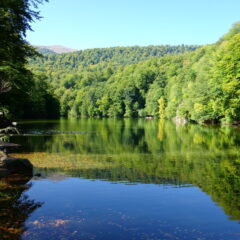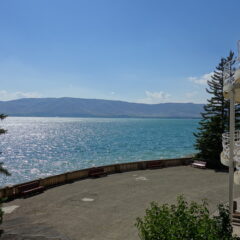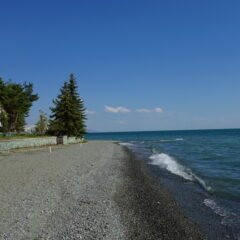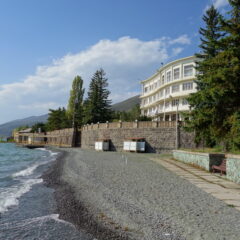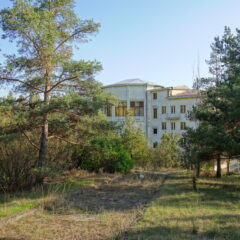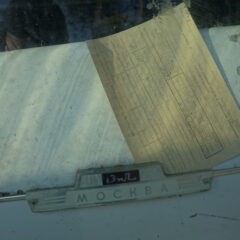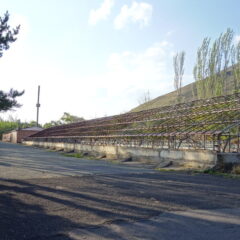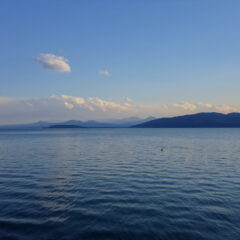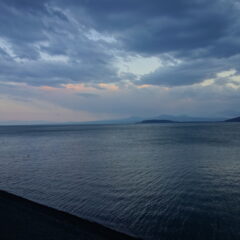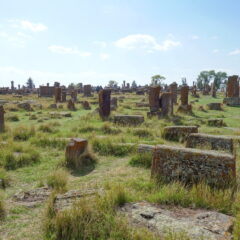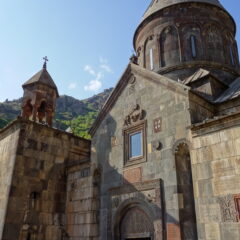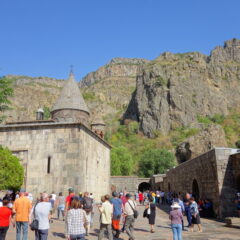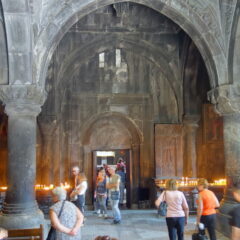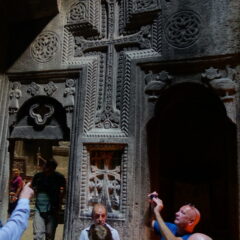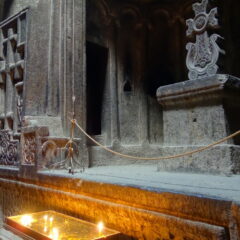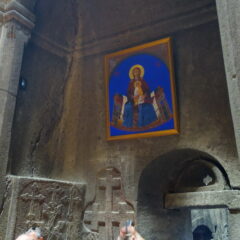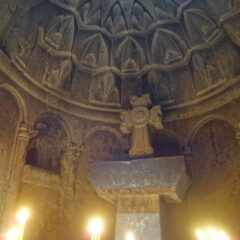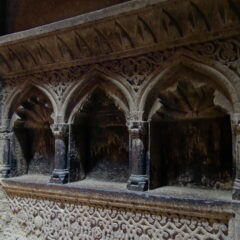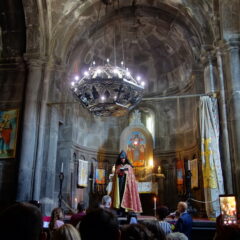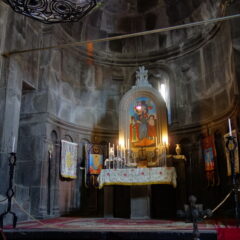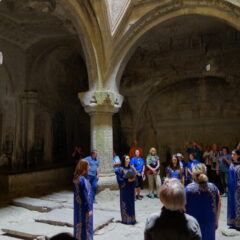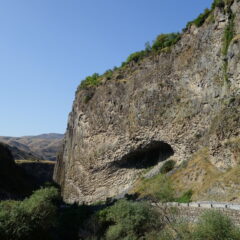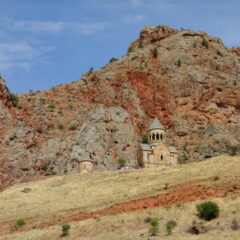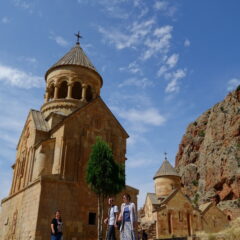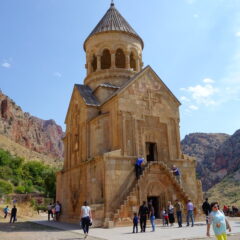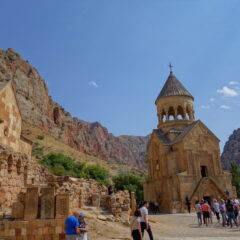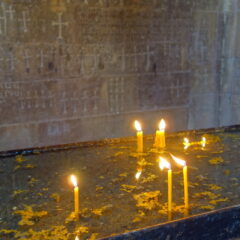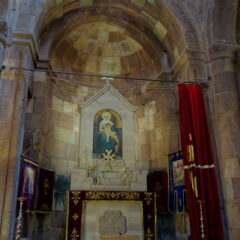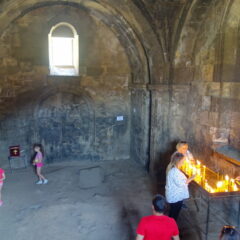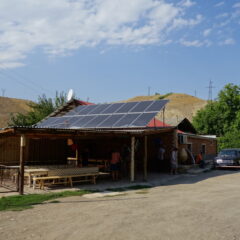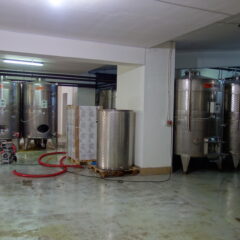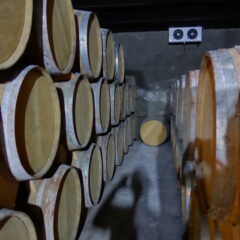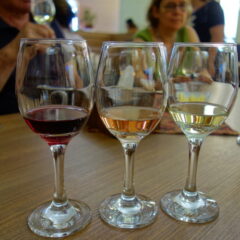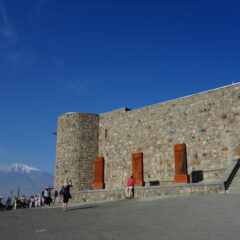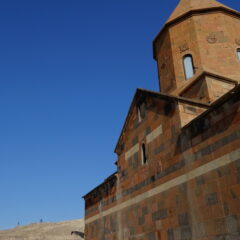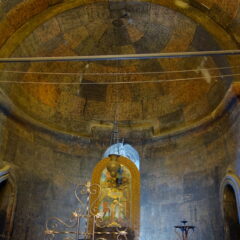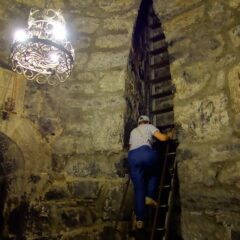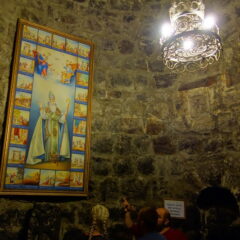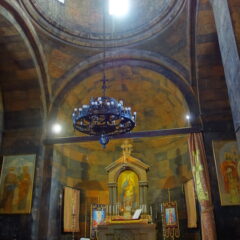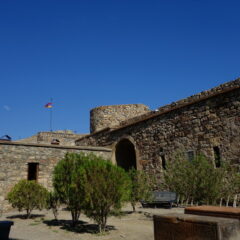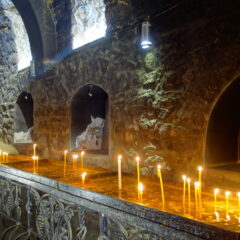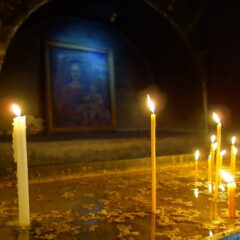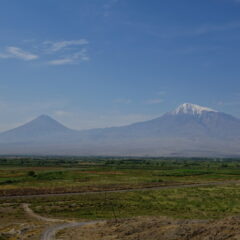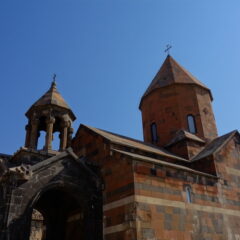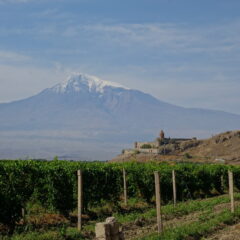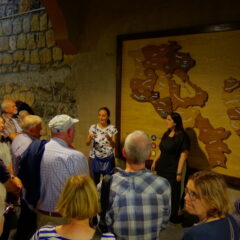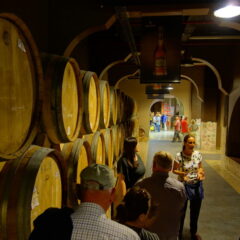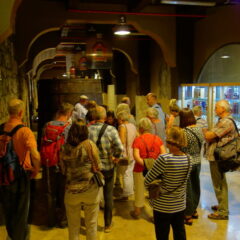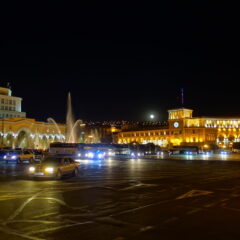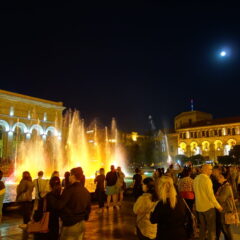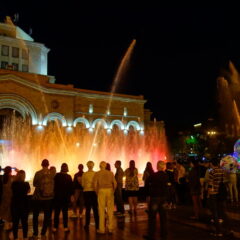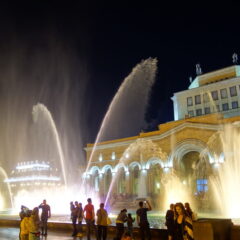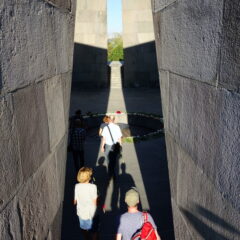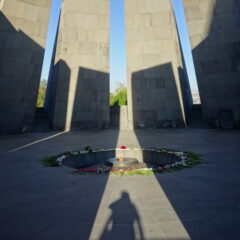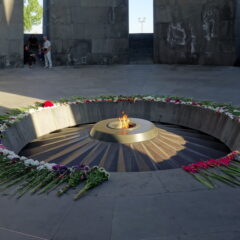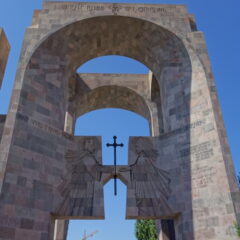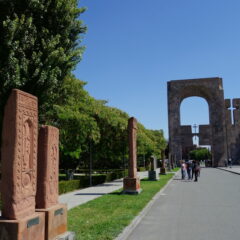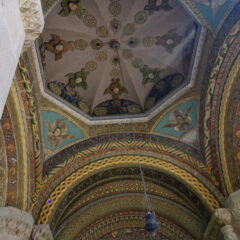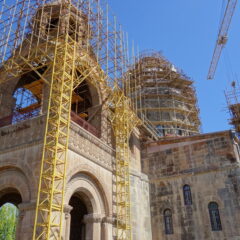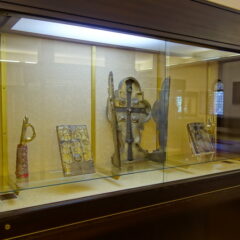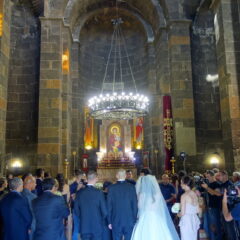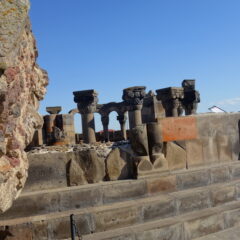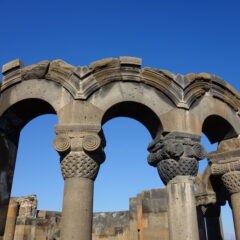It took us about half an hour, to make the about 25km from Yerevan to Etchmiadzin. After a very secular first part of the day, it was now time for a first introduction to the Armenian Church and Armenian churches – – and what better place, to start with that than at the mother see of holy Etchmiadzin or the the Armenian Church equivalent of the Vatican.
We entered the grounds by walking through a gate, to then pass by several khachkars (Armenian cross stones), to eventually make it to the Etchmiadzin Cathedral. The cathedral dates back to the early fourth century – and as such is often considered the oldest cathedral in the world. Currently the cathedral is closed, as it is being renovated – so our visit was limited to the outside.
We did proceed through the building, that houses the pontifical residence, to get to the treasury museum for its impressive exhibition of relics, religious artifacts and (no kidding) water faucets.
Well – faucets make me hungry 😉 – so it was now time, to head over to the refectory for our first lunch in Armenia and also the first sampling of Armenian wine.
After a well-deserved lunch break, we made it back to the bus, with the next stop just a few minutes away. Parking though turned out a bit tricky, as the area – around Saint Hripsime Church (Սուրբ Հռիփսիմե եկեղեցի) – was packed with wedding bridal couples (and their guests), who were using this church from the seventh century as the stage for their (conveyor-belt-style) weddings.
Our next stop was similarly packed, but this time not for the wedding ceremony itself, but only for the photos – seems the ruins of Zvartnots Cathedral (Զվարթնոց տաճար) just provide the right backdrop for wedding photography (at least for some). Similar to Saint Hripsime also Zvarnots Cathedral dates back to the seventh century; its destruction is usually estimated within the tenth century (to unknown reasons).
We had a tour around the ruins (of course without disturbing the photographers), to then end up with a surprise concert of Armenian songs presented by a group of singers (including a famous Armenian opera singer), that just happened to be in the presentation room of the museum.
The way back to Yerevan was uneventful – as most of us ended up sleeping on the bus (the early arrival in the morning and the short night taking its toll).
